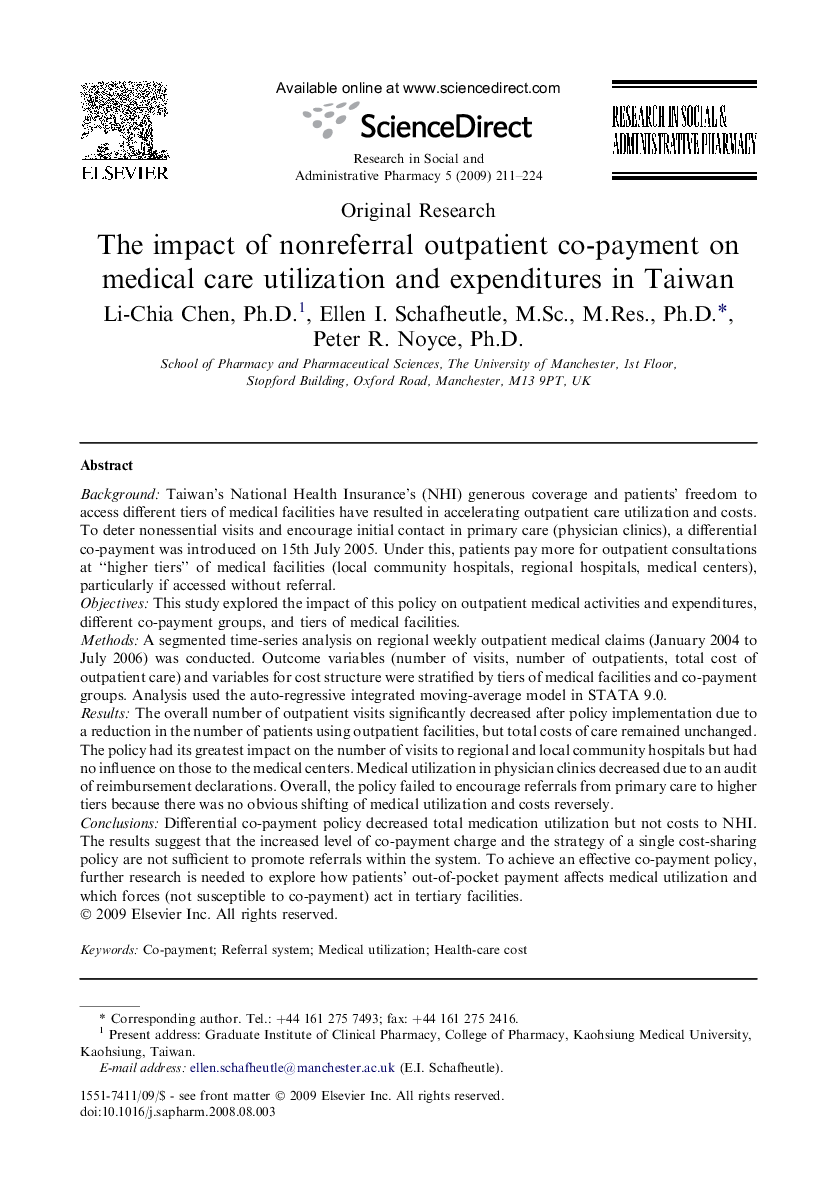| Article ID | Journal | Published Year | Pages | File Type |
|---|---|---|---|---|
| 2509143 | Research in Social and Administrative Pharmacy | 2009 | 14 Pages |
BackgroundTaiwan's National Health Insurance's (NHI) generous coverage and patients' freedom to access different tiers of medical facilities have resulted in accelerating outpatient care utilization and costs. To deter nonessential visits and encourage initial contact in primary care (physician clinics), a differential co-payment was introduced on 15th July 2005. Under this, patients pay more for outpatient consultations at “higher tiers” of medical facilities (local community hospitals, regional hospitals, medical centers), particularly if accessed without referral.ObjectivesThis study explored the impact of this policy on outpatient medical activities and expenditures, different co-payment groups, and tiers of medical facilities.MethodsA segmented time-series analysis on regional weekly outpatient medical claims (January 2004 to July 2006) was conducted. Outcome variables (number of visits, number of outpatients, total cost of outpatient care) and variables for cost structure were stratified by tiers of medical facilities and co-payment groups. Analysis used the auto-regressive integrated moving-average model in STATA 9.0.ResultsThe overall number of outpatient visits significantly decreased after policy implementation due to a reduction in the number of patients using outpatient facilities, but total costs of care remained unchanged. The policy had its greatest impact on the number of visits to regional and local community hospitals but had no influence on those to the medical centers. Medical utilization in physician clinics decreased due to an audit of reimbursement declarations. Overall, the policy failed to encourage referrals from primary care to higher tiers because there was no obvious shifting of medical utilization and costs reversely.ConclusionsDifferential co-payment policy decreased total medication utilization but not costs to NHI. The results suggest that the increased level of co-payment charge and the strategy of a single cost-sharing policy are not sufficient to promote referrals within the system. To achieve an effective co-payment policy, further research is needed to explore how patients' out-of-pocket payment affects medical utilization and which forces (not susceptible to co-payment) act in tertiary facilities.
